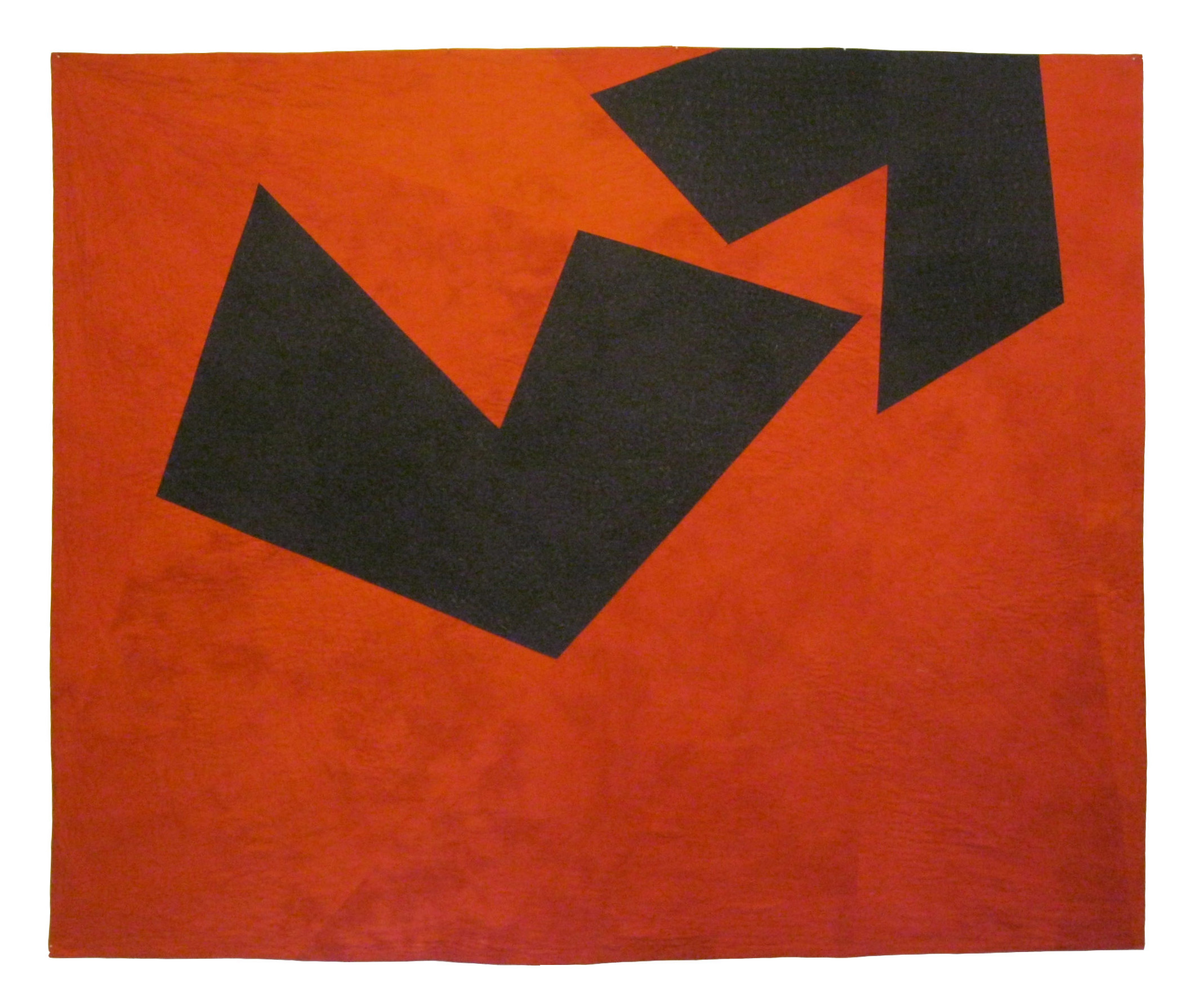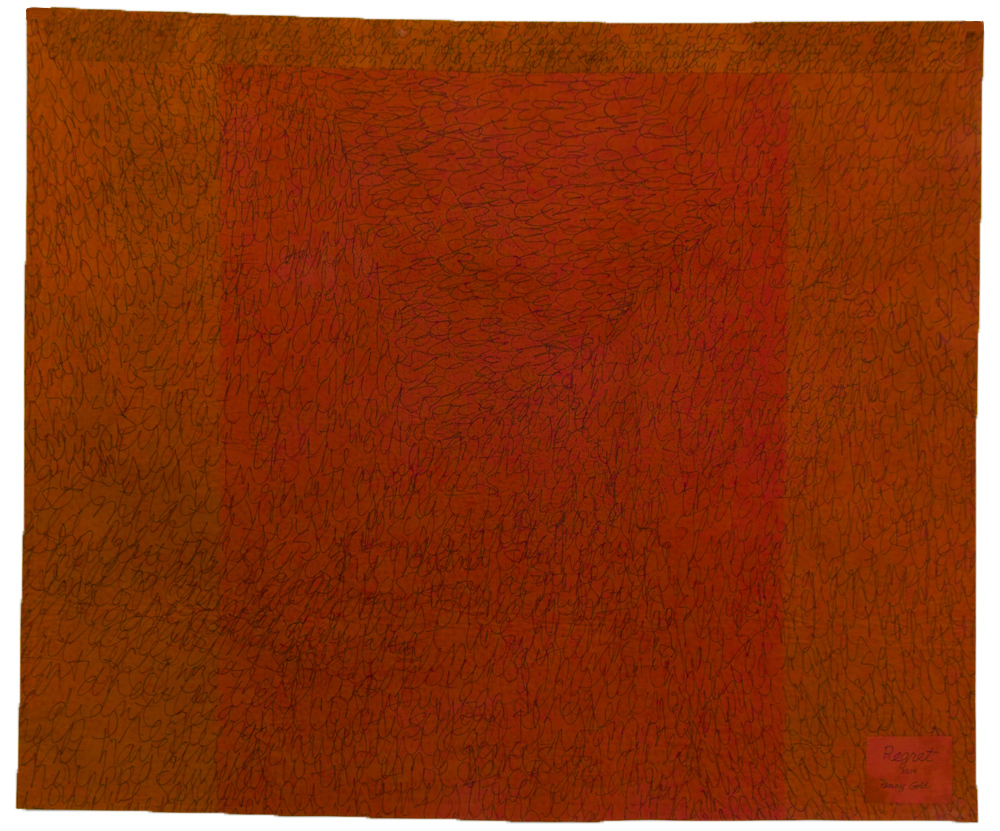

 |
 |
Regret
(2014)
Hand-dyed
cotton fabric and thread,
flannel batting, machine pieced, hand-quilted
70
x 62
inches
The
idea behind this quilt is
the nature of the feeling of regret, which in my experience has to do
with a
missed connection between two people. My experience of regret has
been
intensified by the death of people I love—my parents in 2003 and my
son in 2004. Once
a person is gone, the missed or failed connections become more
salient, and, at
the same time, there is no longer a possibility of repair. No
further
chance to apologize, or to change a behavior. Working on this
quilt helped
me understand the pull that regret had come to have in my life.
The
design
process was arduous; the simpler the design, and the smaller the range
of colors, the more impact each decision has. What exact red
color to mix,
with what level of mottling? What exact black? What shape should the
figures
be, and in what relationship to each other? There were also challenges
in the
pieced construction. My first plan was to cut out the black shapes and
appliqué
them onto the red ground, which would have been much easier than
piecing. But I
could get much sharper lines and points with piecing, which I thought
important
for the meaning of the quilt, so I moved to that method of
construction. For
this, I relied on garment sewing methods that I learned in my teens.
As
part
of the process of working on this quilt, I wrote out a list of my
regrets
about my relationship with Jeremy—all the things I wished I'd done
differently.
I thought of incorporating the litany of regrets by quilting them into
stitching lines over the image, but a small trial showed that the
overlaid
script interfered with the stark abstraction I wanted for the image. I
eventually decided to write them out on the cloth that backs the
quilt. To
obscure the writing, I overlapped the lines a bit. Words are still
sometimes
legible, but it is difficult to read more than a word or two in a row,
even for
me.
I was planning to machine quilt with straight-line quilting, perhaps blocks of lines going in different directioons. I thought this would work with the stark message of the quilt. But then I took a workshop with Dorothy Caldwell on "Human Marks." One of the exercises in the class led me to a stitch (improvised, done while blind-folded, to the word "dialogue") that I've come to think of as my "conversation" stitch. The stitch was appropriate for this quilt about regret, which often comes from missed conversations, or conversations gone awry. I began the stitch in the black areas. I liked the way the stitch looked on the back side of the quilt as well, so in the red areas I did the same stitch, but worked from the back.